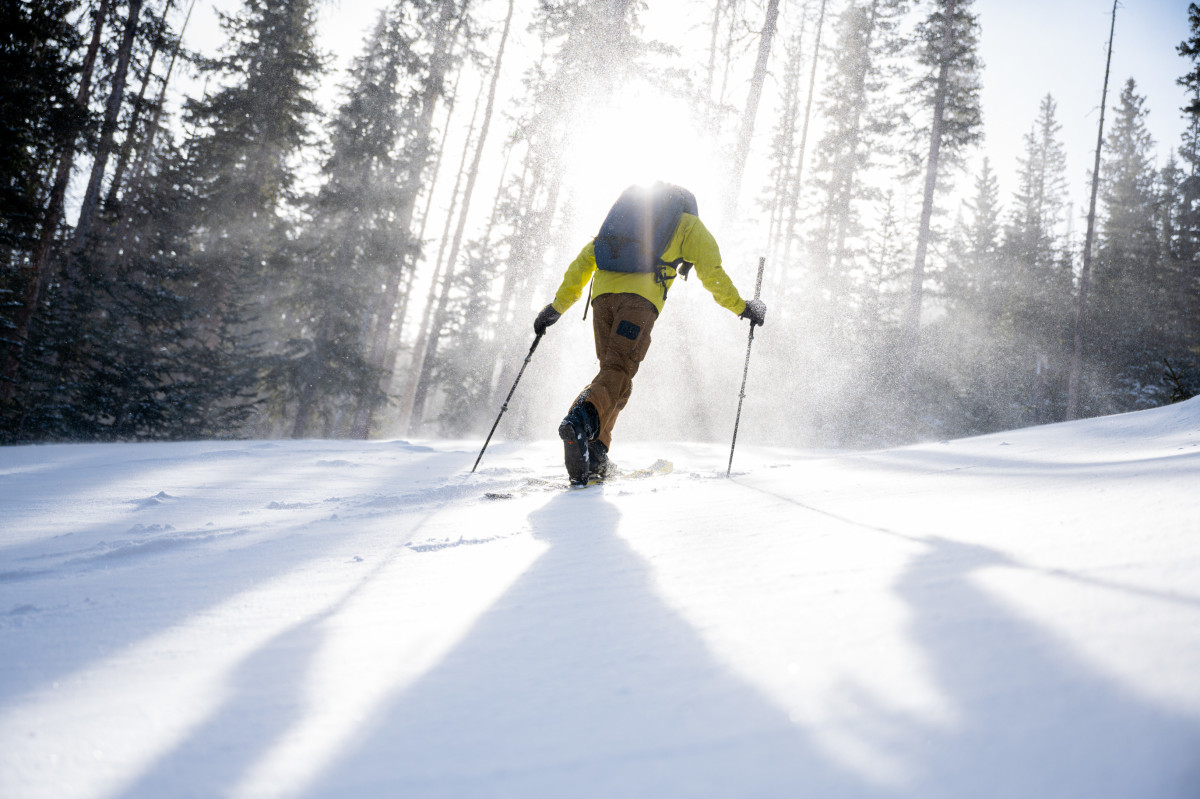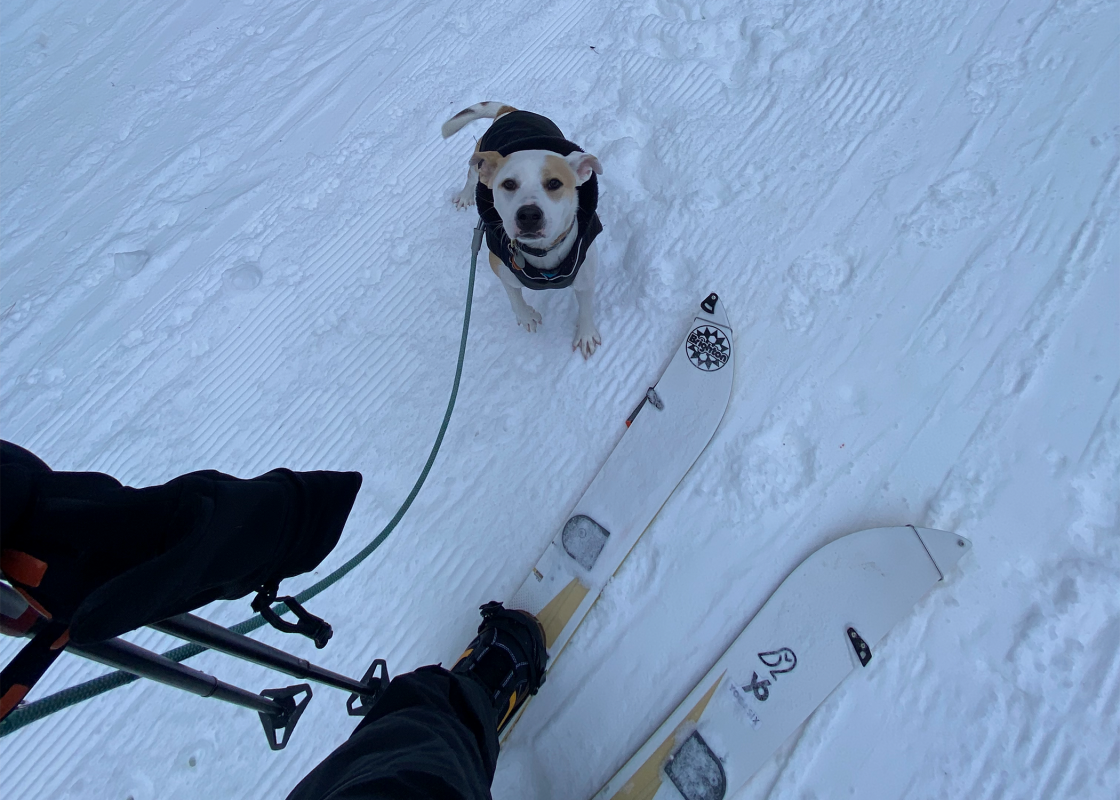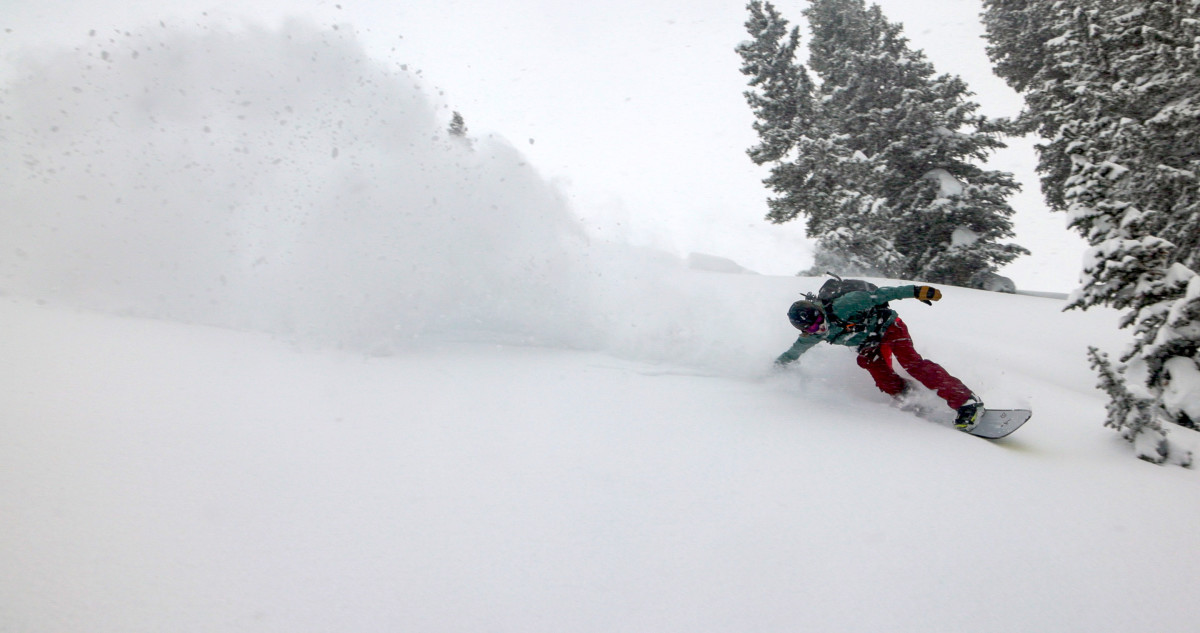Intro:
WNDR Alpine’s Shepherd Tour is the splitboard version of one of Time Magazine’s top inventions of the year. The award-winning snowboard, boasts a shape that is engineered for powder, but is nimble enough to handle east coast hardpack.
MSRP: $999
You can buy this board here.

Photo: Ian Glass
Product details:
- Lengths: 150, 154, 158, 162, 166 cm
- Radius: 7 m @ 158 cm
- Weight: 3200 g @ 158 cm
- Hardware: Spark R&D latches and clips. Fixie clips, top-mount.
What WNDR Alpine says:
This board is designed for the nomad in tune with their surroundings. It has become an extension of body and mind that provides a vehicle to express creativity in the wild. Every attribute of the Shepherd has been fine tuned to meet the requirements of daily travel through the mountains. The board’s lightweight design is designed for those who want to reach the next ridge on the horizon while preserving energy for the descent. Thriving amidst couloirs, steep pitches, and exposed spines, the Shepherd is built for confidence in serious terrain as well as adaptability through a vast landscape. Directional camber, an early rise nose, deep sidecut, and a healthy dose of taper give this board a quick and nimble flow through the mountains and into the unknown. Due to our Algal Core™ and Algal Wall™ materials, you’ll also get unprecedented stability when it matters most. Break trail aboard the Shepherd. Realize your destiny.
The Situation:
I rode this board with my K2 Farout splitboard bindings, Union splitboard skins, and both the Vans Hi-Standard linerless DX boots and the ThirtyTwo Lashed boots. I rode this board in powder and on hardpack in New England in December.

Photo: Josh Sullivan
What Snowboarder says:
When I first got on the hill with my Shepherd Tour, I immediately thought I made a mistake. “This might be too much board for me,” I said to my dog, who was my splitboarding partner that day.
The Shepherd is much more nose than tail, which is typical for a renowned splitboard. I just so happen to live on the East Coast, and feared that this powder-first setup might take some getting used to. I couldn’t have been more wrong.
This board is offered in the following lengths: 150, 154, 158, 162, and 166 cm. I rode the 162 cm. The flex profile transitions from stiff to medium throughout the board's stance, and the tail's flex retains stiffness as the board tapers. Its profile features 5 mm directional camber with slight early rise in nose.
First, the setup. It was super simple to slide my skins over the tips of the board when in ski mode. The Spark R&D hardware that came with the board proved easily compatible with my K2 Farout bindings, and any time it took more than a few seconds to attach my bindings, it was due to a build up of ice and snow. On the uphill, the board was smooth. It was easy to sidehill during the few times I needed to, and it was a lightweight, easy trip up the mountain.

Photo: Adam Clark
As for the downhill, this is where the board truly stands out for me.
When I was discussing which board I should choose with WNDR’s cofounder Xan Marshland, he encouraged me that the Shepherd would be nimble enough for the tight lines I’d be hitting in the northeast. That is 100 percent correct. I could carve just as easily as I would on my Burton Skeleton Key, my typical board in powder, and it was incredibly easy to maneuver through short bursts of tree runs. Even though this is a board born from microalgae and created in a biotech lab, there’s no real science to how you ride this board: Sit back, lean into your turns, and let the Shepherd do the work.
Everyone knows that getting airborne on a splitboard can be an absolute chore. Surprisingly, I found it easy to pop off of rollers and sidehits on the Shepherd. The landing on some splitboards feel like your crashing down to earth on two pieces of plywood duct-taped together. The Shepherd was easy to land, and felt more like a solid than any splitboard I’ve ever ridden.
Who’s it for?
Almost everyone who buy a splitboard does so with the intention of using to surf some fluffy powder lines. If you live on the east coast, those days can be hard to come by. It’s a real catch-22, we want to be ready when that day comes, but still be able to properly turn on hardpack while we wait for that good snow. This is the splitboard to bridge that divide. It’s able to cut through the chop and chunder on an in-bounds uphill day in December, yet floaty enough to perform when that snowstorm hits.
Related: Review: Vans Hi-Standard Linerless DX Snowboard Boot